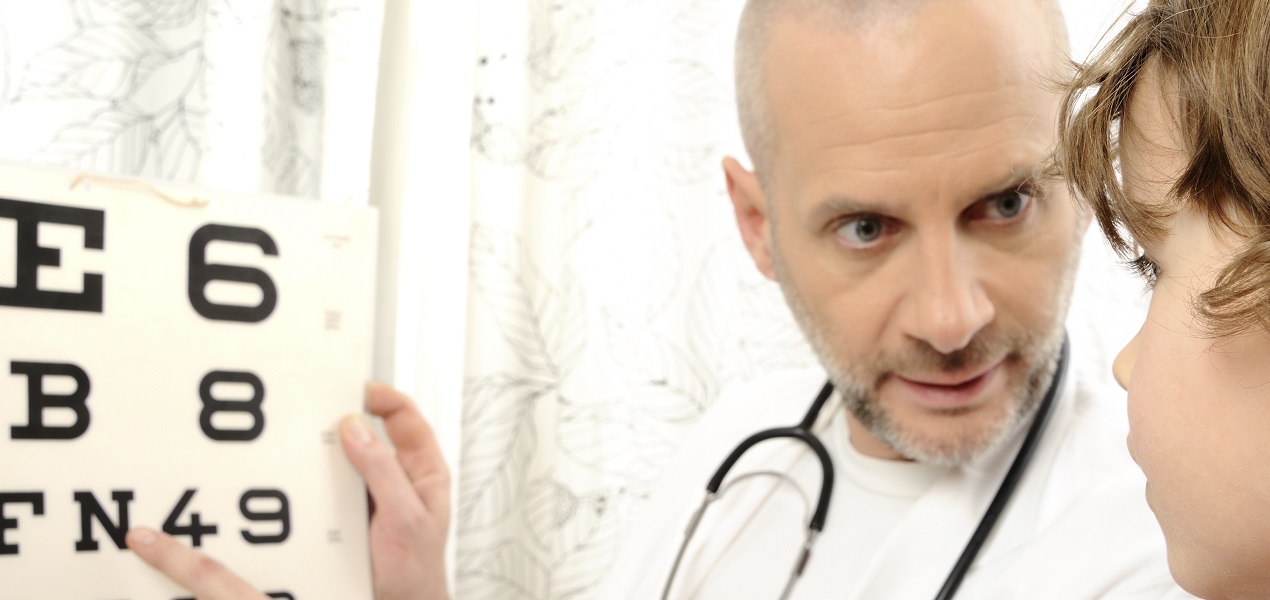What Do Opticians Do?
Opticians design, measure, fit, and adapt eyeglasses, frames, and contact lenses for clients according to prescriptions from ophthalmologists or optometrists. Opticians measure a client’s eyes, including the distance between the centers of the pupils and between the eye surface and a lens to determine the best fit for each individual. Opticians use a range of factors to determine and recommend frames and lenses for a client, from facial features to occupation. Opticians will prepare a work order for an optical laboratory containing instructions for grinding and mounting specific lenses in frames. They will verify exactness of finished lenses and adjust frame and lens position to fit the client. An optician may shape or reshape frames until a precise fit is achieved.
For additional information on opticians, go to: http://www.bls.gov/ooh/healthcare/opticians-dispensing.htm.
Where Do Opticians Work?
Opticians work in physician offices, optical stores, and retail and department stores. Most opticians work 40 hours a week, and some may work evenings and weekends, especially those based in stores.
What Do Opticians Earn?
In 2022, the average annual income reported by the Bureau of Labor Statistics (BLS) for opticians, dispensing in the United States was $44,890. The New York State Department of Labor (NYSDOL) reports that, in 2023, opticians, dispensing in New York earned a median annual salary of $62,640 (opticians, dispensing in the 25th percentile made approximately $44,480 while those in the 75th percentile made approximately $70,141).
Supply and Demand
The Bureau of Labor Statistics projects that the number of jobs for opticians in the U.S. will increase by 4% between 2021 and 2031. The New York State Department of Labor projects that the number of jobs for opticians, dispensing in the state will increase by 28% between 2020 and 2030.
Middle age is a time when many individuals use corrective lenses for the first time, and older adults generally require more vision care than others. As the share of these older age groups in the population increases, more opticians will be needed to provide services to them. However, the number of job openings for opticians will be limited because the occupation is small. Also, new technology is allowing opticians to work faster, limiting the need for more workers. Also moderating the need for optician services is the growing use of laser surgery to correct vision problems.
Still, fashion also influences demand. Eyeglasses frames come in a growing variety of styles, colors, and sizes, encouraging people to buy more than one pair or switch frames frequently, thereby requiring the services of opticians.
For more information on projections of opticians by New York State labor regions, (2018-2028), click here.
Educational Program Requirements
While a high school degree is desirable as is at least some college, most workers entering this occupation receive their training on the job, mainly through formal apprenticeship programs that may last two years or longer. This training includes technical instruction in which, for example, new opticians measure a customer’s eyes or adjust frames under the supervision of an experienced optician. Trainees also learn sales and office management practices.
Individuals interested in the field should have knowledge of mathematics, physics, geometry, mechanical drawing, algebra, and basic anatomy. Some employers prefer to hire people who have graduated from an opticianry or ophthalmic dispensing program. A number of community colleges and technical schools offer formal education in opticianry. Some award an associate degree, which takes two years, and others offer a certificate, which takes one year. An accredited two-year degree program may provide general math and science courses (physics algebra, trigonometry) and specific courses in the anatomy of the eye and courses in ophthalmic materials and dispensing. Familiarity with a variety of computer skills is also valuable.
For more information on accredited optician schools, go to: http://www.coaccreditation.com/.
New York Licensure Requirements
To be licensed as an optician in New York, individuals must graduate from a two-year ophthalmic dispensing education program registered or approved by New York State Education Department or satisfactorily complete an NYSED approved two-year apprenticeship training program. Applicants must also pass a written and a practical exam. Additional requirements are necessary to dispense contact lenses. For more information on New York State licensure requirements, go to: www.op.nysed.gov/prof/od/
National Certification
While certification is not required for an optician to practice in New York, national certifications are available from either the American Board of Opticianry for those who fit, work with, or dispense eyeglasses and the National Contact Lens Examiners for those who fit and work with contact lenses. For more information on these certifications, go to: http://www.abo-ncle.org/.
Financial Support
Some colleges, various optical companies, and state and local optician associations, including the New York State Society of Opticians, http://www.nysso.org/, offer scholarships for students pursuing optician degrees.
Education Programs in New York
| Erie Community College North Campus 6205 Main Street Williamsville, NY 14221 (716) 851-1322 |
New York City College of Technology Vision Care Technology 285 Jay St Brooklyn, NY 11201 (718) 260-5298 |
Additional Web Links
American Board of Opticianry (ABO) and National Contact Lens Examiners (NCLE)
New York State Optometric Association
New York State Society of Opticians
Optical Society of Western New York
Opticians Alliance of New York
[whohit]Opticians[/whohit]


